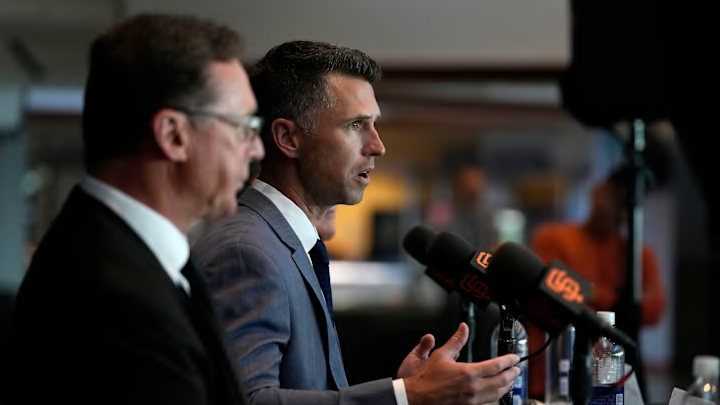The SF Giants committed $250.8 million against the Competitive Balance Tax (CBT) in 2024, surpassing the $237 million CBT threshold with ease. This could have a downstream effect on the club if they plan to target a player who rejects a qualifying offer this winter.
1 factor that could have a downstream effect on the SF Giants this offseason
The Giants nearly went 10 years between signing a player who rejected a qualifying offer. Jeff Samardzija rejected a qualifying offer from the Chicago White Sox before signing a five-year, $90 million contract with the Giants in December of 2015. In doing so, the Giants lost their first-round pick in 2016.
This past March, they broke that streak by adding Matt Chapman and Blake Snell. Both had rejected a qualifying offer from the Toronto Blue Jays and San Diego Padres, respectively. There was certainly a hint of desperation with this approach as Farhan Zaidi was looking to build a playoff contender and was not in a position to consider the downstream effect of these moves.
The Giants lost their second-and-third-round picks in 2024 as well as $1 million in international bonus pool money. For a team that has not drafted well in years, there is a case to make that using free agency to build a roster makes much more sense than trying to build a team from the ground up.
Of course, the other side of this coin is that a team like the Giants is in no position to be losing draft picks or international bonus pool money.
They could be in a similar position this winter. After crossing the CBT threshold in 2024, the penalties for signing a player who rejects a qualifying offer will be stiffer. If they did so, the Giants would lose their second-and-fifth-round picks as well as $1 million in international bonus pool money.
Again, for a team that has not drafted well in over a decade, it might be the tradeoff that the front office is willing to make. However, punting on so much draft and signing capital in such a short period of time is still not a great approach for any organization.
However, there could be quite a few options that make sense to make this type of tradeoff. They are seen as a bubble contender for Juan Soto as well as a potential landing spot for Willy Adames. Both players will be issued a qualifying offer and will reject it.
In those cases, the tradeoff makes sense because you are getting a substantially better player than what those draft picks will likely end up being. At the end of the day, it is a decision they must weigh because building a roster through free agency is far more expensive than trying to build up a farm system that feeds the major league roster.
